http://www.livius.org/place/etemenanki/
The Louvre tablet again offers information. There were several cult rooms: Marduk shared his room with his wife Sarpanitum, a second room offered accommodation to the scribe-god Nabû and his wife Tashmetu, and there were rooms for the water god Ea, the god of light Nusku, the god of heaven Anu, and finally Enlil, Marduk's predecessor as chief of the Mesopotamian pantheon. A seventh room was called "house of the bed" and contained a bed and a throne. A second bed was on the inner court of the temple on the highest platform of the Etemenanki. Finally, there must have been stairs to the roof. It is possible that the famous Babylonian astronomers, the Chaldaeans, did their observations at the topmost level of the building.
The story of the Tower of Babel, found in the Biblical book of Genesis, is one of the most famous and beloved legends of mankind.
The whole earth was of one language, and of one speech. And it came to pass, as they journeyed from the east, that they found a plain in the land of Šin'âr, and they dwelt there. And they said one to another, "Come, let us make bricks and burn them thoroughly." And they had brick for stone, and slime had they for mortar. And they said, "Come, let us build us a city and a tower whose top may reach unto heaven; and let us make us a name, lest we be scattered abroad upon the face of the whole earth."Let's start our discussion of the Etemenanki with some remarks about this Biblical story. The Hebrew word Bâbel, Confusion, is often used for Babylon (Akkadian Bab-ili), but this is not sufficient to prove the identification of the tower with a monument in this big city. (Imagine a legend about the unity of mankind, which is situated by scholars in Union, Connecticut.) Fortunately, the story contains a second geographical clue: the tower was erected on "a plain in the land of Šin'âr". This country is known from other books of the Bible (Isaiah 11.11 and Zechariah 5.11) and is translated as "Babylonia" in the Septuagint. So there is nothing that keeps us from identifying the Biblical building with a monument in ancient Babylon. This must be the building known as E-temen-an-ki, the 'House of the foundation of heaven on earth', a giant mountain of bricks and tiles with, on top, a temple for the god Marduk. He had a second temple in the neighborhood, the Esagila.
And the Lord came down to see the city and the tower which the children of men built. And the Lord said, "Behold, the people are one and they have all one language, and this they begin to do; and now nothing will be withheld from them which they have imagined to do. Come, let Us go down, and there confound their language, that they may not understand one another's speech." So the Lord scattered them abroad from thence upon the face of all the earth; and they left off building the city.
Therefore is the name of it called Bâbel (that is "Confusion") because the Lord did there confound the language of all the earth; and from thence did the Lord scatter them abroad upon the face of all the earth.note
The ancient Babylonians called these brick mountains a ziqqurratu or ziggurat, which can be translated as "rising building" (Akkadian zaqâru, "to rise high"). This type of temple tower is the oriental equivalent of the Egyptian pyramid and just as old, although there are two differences: the ziggurat was not a tomb, and ziggurats were built well into the Seleucid age, whereas the building of pyramids came to an end after c.1640 BCE. Ziggurats played a role in the cults of many cities in ancient Mesopotamia. Archaeologists have discovered nineteen of these buildings in sixteen cities; the existence of another ten is known from literary sources.
The Etemenanki was among the largest of these, and the most important. (The largest was the shrine of Anu at Uruk, built in the third or second century BCE.) According to the Babylonian creation epic Enûma êliš the god Marduk defended the other gods against the diabolical monster Tiamat. After he had killed it, he brought order to the cosmos, built the Esagila, which was the center of the new world, and created mankind. The Etemenanki was next to the Esagila, and this means that the temple tower was erected at the center of the world, as the axis of the universe. Here, a straight line connected earth and heaven. This aspect of Babylonian cosmology is echoed in the Biblical story, where the builders say "let us build a tower whose top may reach unto heaven".
The best description of the monumental tower can be found in a cuneiform tablet from Uruk, written in 229 BCE. It is a copy of an older text and is now in the Louvre in Paris. It states that the tower was made up of seven terraces and it gives the height of the seven stocks - 91 meters all in all. The ground floor measured 91 x 91 meters, and this is confirmed by archaeological excavations conducted by Robert Koldewey after 1913 (91,48 x 91,66 m). Large stairs were discovered at the south side of the building, where a triple gate connected the Etemenanki with the Esagila. A larger gate in the east connected the Etemenanki with the sacred procession road. Seen from the triple gate, the Etemenanki must have resembled a true "stairway to heaven", because the gates on the higher terraces seemed to be standing on top of each other.
Using the archaeological data and the tablet at the Louvre, several reconstructions have been proposed. (The picture shows the most recent one, by Hansjörg Schmid.) However, there is one caveat: it is possible that the Louvre tablet describes not the real temple tower, but an idealized sanctuary - a blueprint for a Etemenanki that still has to be build, comparable to the description of the temple of Jerusalem in the Biblical book of Ezekhiel.
On the highest terrace was a temple, dedicated to the Babylonian supreme god Marduk. The Louvre tablet again offers information. There were several cult rooms: Marduk shared his room with his wife Sarpanitum, a second room offered accommodation to the scribe-god Nabû and his wife Tashmetu, and there were rooms for the water god Ea, the god of light Nusku, the god of heaven Anu, and finally Enlil, Marduk's predecessor as chief of the Mesopotamian pantheon. A seventh room was called "house of the bed" and contained a bed and a throne. A second bed was on the inner court of the temple on the highest platform of the Etemenanki. Finally, there must have been stairs to the roof. It is possible that the famous Babylonian astronomers, the Chaldaeans, did their observations at the topmost level of the building.
This is the point where another text becomes useful: the Histories by the Greek researcher Herodotus of Halicarnassus (fifth century BCE). Although he probably never visited Babylon, his description of the Etemenanki tells us something about the temple ritual. (Herodotus correctly calls the supreme god of Babylon Bêl ("lord"), because his real name was not pronounced.)
The temple of Bêl, the Babylonian Zeus [...] was still in existence in my time. It has a solid central tower, one stadium square, with a second erected on top of it and then a third, and so on up to eight. All eight towers can be climbed by a spiral way running round the outside, and about half way up there are seats for those who make the ascent to rest on. On the summit of the topmost tower stands a great temple with a fine large couch in it, richly covered, and a golden table beside it. The shrine contains no image, and no one spends the night there except (if we may believe that Chaldaeans who are the priests of Bêl) one Babylonian woman, all alone, whoever it may be that the god has chosen. The Chaldaeans also say -though I do not believe them- that the god enters the temple in person and takes his rest upon the bed.note
Marduk and his snake dragon (from J. Black & A. Green, Gods, demons and symbols ofancient Mesopotamia,1992)
Probably, we must simply ignore it. He goes on to make a comparison with a similar Egyptian ritual, and this betrays him: on several occasions, Herodotus offers comparisons between Babylonia and Egypt, and in those cases, he is always wrong and may be repeating a story told by Egyptian priests. The story about the woman and the god belongs to this category.
The Etemenanki is mentioned for the first time in the Annals of the Assyrian king Sennacherib, who claims that he destroyed the temple tower of his Babylonian enemies in 689 BCE. Although he certainly sacked Babylon, it is impossible that his looting soldiers destroyed the Etemenanki. The wholesale destruction of large-scale structures is the prerogative of the modern age; ancient armies were incapable of destroying a large building.
The fact that Sennacherib could send an army against the Etemenanki, proves that it was older, and it would be remarkable if it was not so by at least 1000 years. During the reign of king Hammurabi (1792-1750), Babylonia was the leading power of Mesopotamia. In his age, there were ziggurats in lesser towns like Qatara, Aššur, Sippar, Kish, Borsippa, Nippur, Uruk, Larsa, Ur, and Eridu. It would be very strange if the capital of the world would be the only city without a ziggurat. It may be noted that the creation epic Enûma êliš with its reference to the building of the Esagila (and the implication of the existence of the Etemenanki), had already been written.
After Sennacherib, Esarhaddon was king of Assyria (680-669). He allowed the Babylonians to rebuilt their city. Another construction phase may have been after the war between the Assyrian king Aššurbanipal and his brother Šamaš-šum-ukin, the viceroy of Babylon (667-648). When Babylonia became independent under Nabopolassar (625-605), there was renewed building activity, and finally, king Nebuchadnezzar (605-562) is recorded as one of the builders. He finished the temple at the top, which was covered with a roof made of cedars from the Lebanon. The two last king have boasted that the tower "reached unto heaven" (cf. the Weidner Chronicle).
The building history suggests that the Babylonians were occupied with the construction of the tower for over a century. It is possible that the ambitious design of a tower of 92 x 92 x 92 meters was too grandiose, so that they needed as much time for their project as the medieval builders of the European cathedrals. For a long time, the tower must have looked unfinished, and this may explain how the Biblical story came into being. It is certainly possible that the sanctuary was never finished at all.
The Persian king Xerxes (r.486-465) has often been blamed for the destruction of the Etemenanki. During his reign, there were indeed two revolts (led by Bêl-šimânni and Šamaš-eriba, both in 484), and Herodotus states that Xerxes took away a large statue of a man from the Esagila. Some six centuries later, the historian Arrian of Nicomedia, the author of an important book on Alexander the Great, expanded this last piece of information to a remark about the destruction of the Etemenanki. After all, Arrian had to explain why Alexander started to rebuild the monument that was by then known as the "tomb of Belus". But his story can not be true. The continuous cult at the Esagila and Etemenanki is mentioned in cuneiform sources form the fifth and fourth centuries, and is confirmed by Herodotus (whatever his merits), who states that "the temple of Bêl [...] was still in existence in my time".
The truth must be that by the time of Alexander, the ziggurat had fallen into disrepair. Buildings made of brick easily fall apart and need permanent care in the hot climate of the Near East. There is one badly damaged source, quoted here, that suggests that the Persian king Artaxerxes IV Arses (338-336) had already decided to restore the Esagila and the Etemenanki. Behaving like a Babylonian king was supposed to do, Alexander ordered 10,000 soldiers to remove the remains of the old building. Over a period of two months (April and May 323), tiles and bricks were brought to the eastern part of the city. This time, the tower was not destroyed by an army looking for loot: it was a systematic attempt to clear the building ground.
Although the site was now cleared, the tower was never rebuilt. On 11 June, Alexander died. Civil war broke out between his generals, the Diadochi. During the next years, Babylon saw several armies, and it lasted until 309 until peace conditions were restored by Seleucus Nicator. However, he founded another capital for the new Seleucid empire, Seleucia. Babylon was never restored to its old status, and that meant the end of the attempts to rebuilt the Etemenanki - although one scribe in Uruk was still hoping for its reconstruction and wrote the Louvre tablet. The Esagila remained intact well into the first century BCE and probably even later.
Interesting detail: the Ruin of Esagila Chronicle mentions that the Seleucid crown prince Antiochus sacrificed on the remains of the Etemenanki, stumbled and fell, and angrily ordered his elephant drivers to destroy the last remains.
Arabian authors were responsible for keeping the memory of the Etemenanki alive, sometimes comparing the greatness of the ancient city with the humble town Bâbil of their own age. However, they thought that the ancient royal palace, which was the largest ruin on the site, was the tower of Babel. The inhabitants of Bâbil told the same to the first Western visitors, in the sixteenth century.
In the nineteenth century, the real Etemenanki was rediscovered by the native Arabian population. People of the nearby village wanted to create a palm garden and discovered ancient bricks when they lowered the groundwater level. German engineers understood the significance and in 1913, Robert Koldewey started the excavation of the Etemenanki. Today, only four channels can be seen; the rest of the site is overgrown with weed. A satellite photo can be found here.
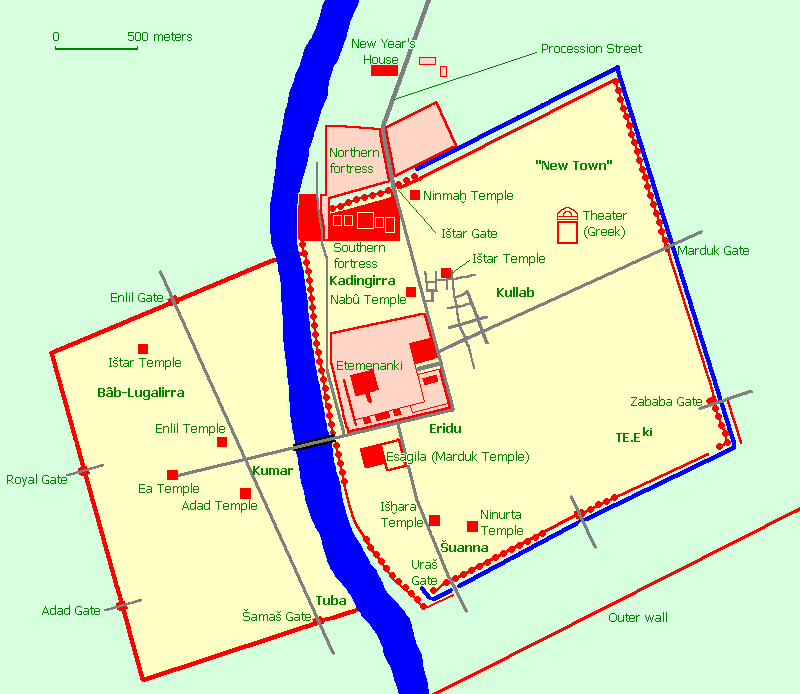
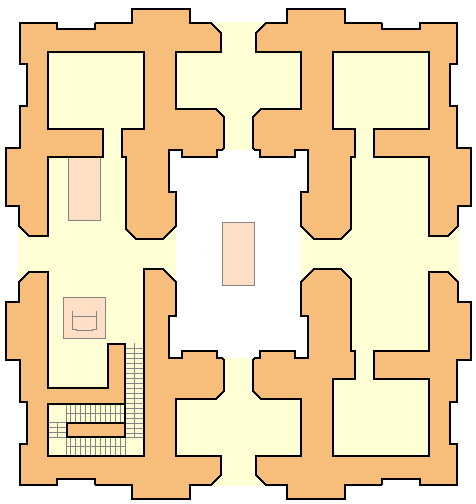
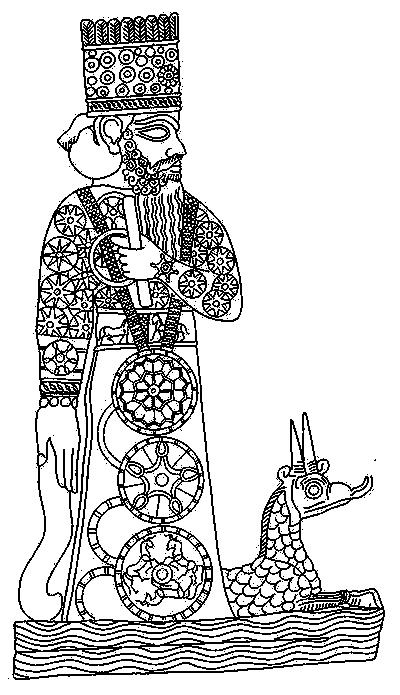
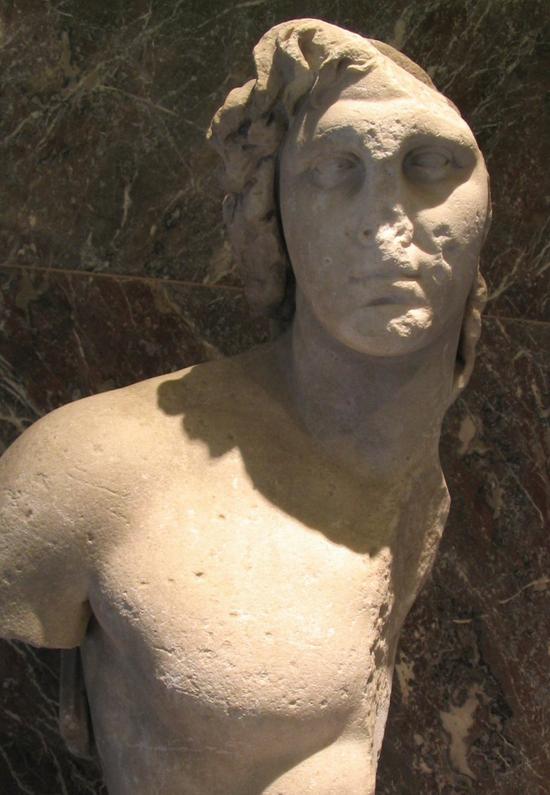
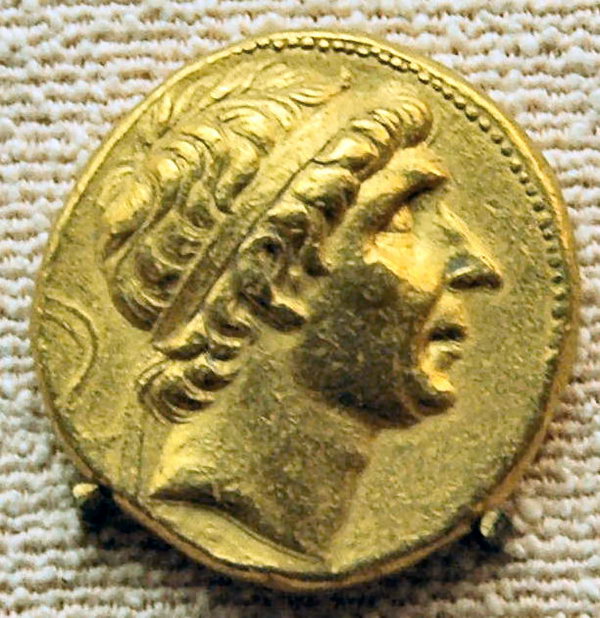
No comments:
Post a Comment